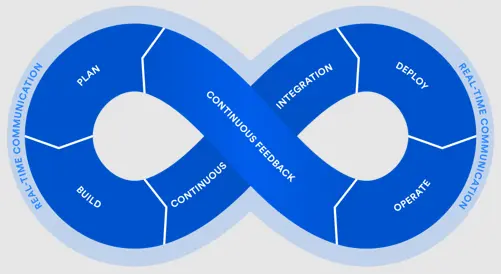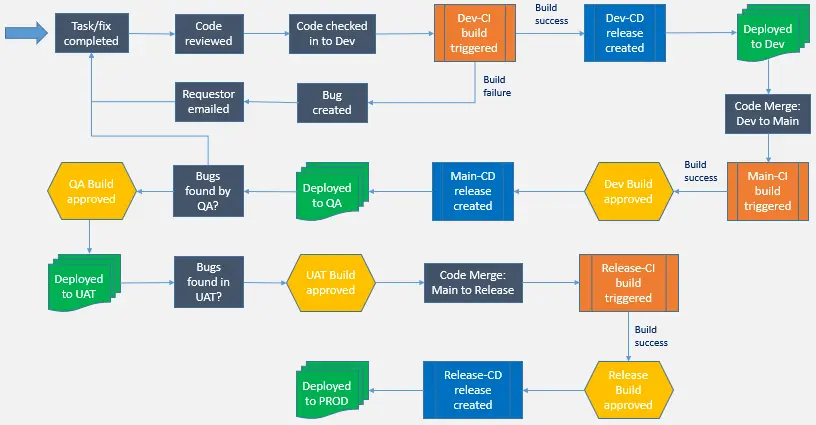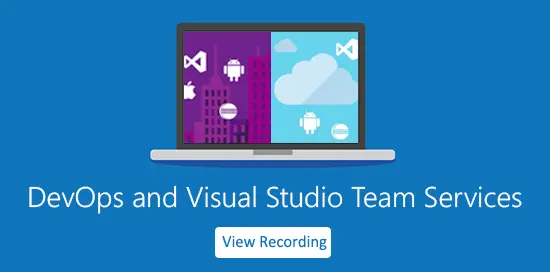
DevOps is no more just a buzzword in the IT industry. DevOps can help your enterprises accelerate software and services delivery. If you are building software, and you are still stuck with the old-fashioned ways of software delivery, then you are way behind the rest of the world. It’s high time you embrace DevOps, because it is pretty much the only way forward. Read on to find out why DevOps is essential to digital transformation, if you haven’t already.
WHY?
- Constantly evolving applications
Gone are the waterfall days, when we spent months to build a software, and presented it to the customer who threw it back with a note – “That’s not what I asked for!” The agile development model encourages customers to pour in their feedback every sprint. - Need for faster delivery to market
The agile development model has kind of spoilt the customers, in a way that they want everything in real-time. The fact that most of the leading organizations have adopted the model, their competitors don’t want to lose the race of innovation. - Waiting periods for deployments
Even if the development team finds a way to be quick and agile, they hit a wall when it comes to deployments. The operations team most of the times goes by the book. It doesn’t matter if the customer is dying for a release, there are no workarounds. There is nothing like a quicker deployment. - Works on my machine
The developers have their own principles. For them, it does not matter how the application behaves on another machine, till the point it works on their own machine. The blame easily shifts to the QA’s machine or the environment. - Error-prone manual processes
“Manual” and “error-prone” go hand in hand. Pick any automated process today and look back a few years back. Be it QA testing, code analysis, or deployments, manual processes not only make our lives miserable but are the bearers of errors, which are at times mission critical. - Soaring IT Budgets
If we go through points 1 to 5, and put a traditional software development methodology at work, it’s a no-brainer that the IT budgets will only go one direction, and that is up. Higher the IT budgets, pricier the product, and of course, unhappier the customer.
WHAT?
There are many definitions that are available on the web, but essentially, DevOps is a software development approach. It is not a tool that you can use, but a set of guidelines that helps teams build software together in an efficient manner. It brings the two traditional silos – developers and operations – together into one team to work towards a common goal, that is, a quality product.
Following are the five key principles of DevOps:
1. Communication and collaboration within team
2. Automation of processes
3. Monitoring of every development stage
4. Continuous integration & feedback
5. Rapid, frequent and reliable software development

HOW?
As mentioned earlier, DevOps is a concept that can be implemented using various adaptations and tools. In Microsoft world, the foremost tool that can be used to implement DevOps is Visual Studio Team Services (VSTS). Using the tool, you can ensure:
- Code quality using Code Analysis, and automated Unit Tests and Code Reviews
2. Code isolation using branching and merging
3. Continuous integration using Build Agents and Build Definitions
4. Management of environments using pipelines for QA, UAT, PROD
5. Secure & continuous deployments using pre-deployment and post-deployment approvals
6. Monitoring of application & deployments using VSTS Dashboard and Application Insights
Below is a flow of events in a typical CI/CD setup.

BLOCKERS!
There is no easy way to success. Below are some of the hurdles that you will most likely have to cross before you can call yourself a DevOps organization. As always, the first steps are the most difficult.
- Culture shift
You can switch tools, you can automate processes, but until and unless the mindset of your organization makes the switch, nothing will work. Right from the developer to the CEO, to the customer, the work culture must take the big leap. Every single member shares the responsibility of driving the team to the goal. DevOps is not – “I did my job” – but it’s a collective and continuous churn. - Choice of tools
DevOps has been popularly around for quite a while now. As a result, there are many tools to pick from. Making the right choice can become tricky at times. - Dev vs Ops mentality
Even though DevOps brings developers and operations team together, the initial days of transition will certainly see the history of friction repeat. It lies upon the leaders to make sure that the team members understand their roles in the team and the need of working together. - Learning new skills
With more and more technologies aligning with DevOps methodology, it becomes important for DevOps teams to keep up with the newer trends. It can obviously be challenging for those who worked with the same set of tools for their entire careers.
The DevOps and Agile best practices allow you to respond to changing market dynamics with speed and confidence and get to market faster with high-quality customer-facing digital solutions to stay competitive and offer a better customer experience.
Watch our on-demand webinar on DevOps and Visual Studio Team Services to learn how to build apps faster for any platform (iOS, Android, Windows and others.) and accelerate your application delivery lifecycle with DevOps.

WinWire Technologies, a Microsoft Managed and Gold Certified Cloud Platform Partner is helping several of our customers leverage DevOps and Cloud in their digital transformation journey. Please reach us to learn how we can drive results with DevOps, cloud and digital transformation.






